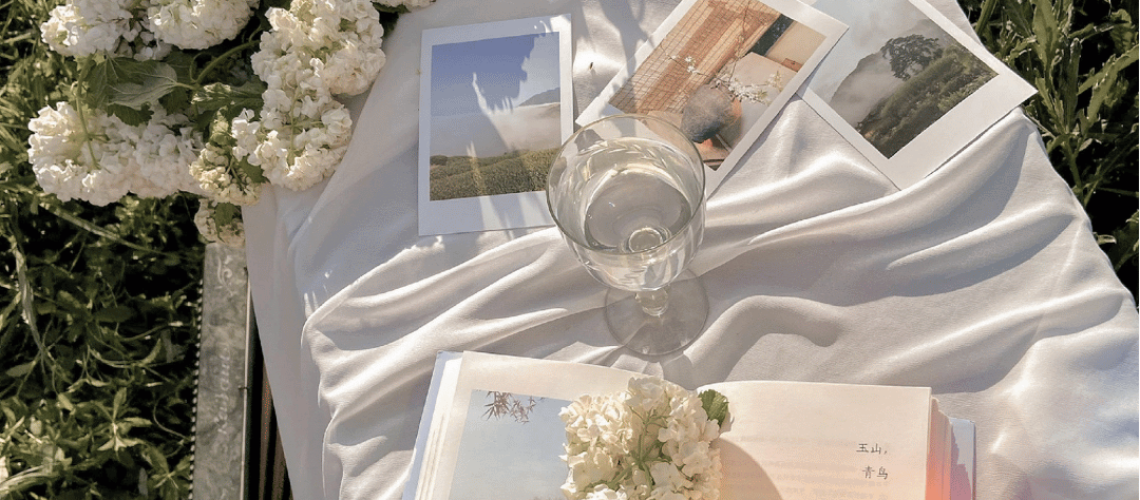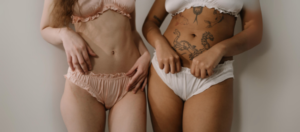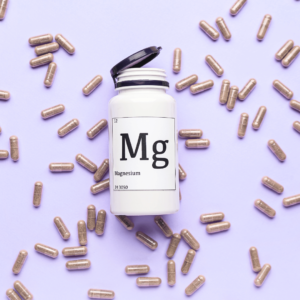The teenage years are an exciting, complicated time. The shift from child to adult begins, independence grows, personalities bloom and boundaries are pushed. There are so many firsts, as well as navigating where one fits in amongst their peers and the wider world around them. An added layer of change for teenage girls is learning and navigating their blossoming menstrual cycle.
The age of menarche (first menstrual period) is becoming progressively earlier and earlier due to environmental oestrogens, with some girls getting their first period under 10 years old. However most girls, will have gotten their first period before 15 years of age, and the teenage years play a big role in setting the stage for the menstruating years to come.
Here are 5 things you need to know about navigating teenage periods:
By the third year after menarche, 60-80% of menstrual cycles are between 21-34 days long. Irregular menstrual cycles (as well as period pain) are a very common reason for teenage girls to be prescribed the oral contraceptive pill. However, some irregularity isn’t necessarily a cause for concern in the initial years after menarche. Time and patience need to be given to the maturing and developing HPO axis and menstrual cycle. If cycles continue to be irregular 3+ years after menarche support from a women’s health practitioner can be invaluable to determine if extra support is needed.
Condoms (which teens should be using regardless of other methods of birth control in place to prevent STDs) are 98% effective with correct use, and 85% effective with typical use. Fertility awareness-based methods (FABMs) are 99.6% effective (symptothermal double-check method) with perfect use and 98.2% with typical use. Although there is less data available on typical use rates.
At the conclusion of the luteal phase, both oestrogen and progesterone levels drop, which signals the uterine lining (endometrium) to slough off and shed, which is what we know as the menstrual period. Many different processes need to occur before getting to the end result of a menstrual period. Without ovulation, there is no period. A girl’s fertility will begin before she experiences menarche.
Some situations for further investigation and support include menstrual periods that:
At Femtek we are passionate about educating young girls and teens about menstrual health and body literacy. Using the BBRing as a way to track and observe ovulation means it’s possible for young girls to identify their very first ovulation before menarche and take the guesswork and mystery out of when their first period will arrive!
The age of menarche (first menstrual period) is becoming progressively earlier and earlier due to environmental oestrogens, with some girls getting their first period under 10 years old. However most girls, will have gotten their first period before 15 years of age, and the teenage years play a big role in setting the stage for the menstruating years to come.
Here are 5 things you need to know about navigating teenage periods:
Pain is not normal
Whilst period pain (dysmenorrhea) is extremely common, it is not “normal” or something that needs to be put up with or tolerated. For many teenage girls, their periods can be particularly painful for a variety of reasons. One factor is that ovulation and progesterone production don’t fully mature and establish for 10+ years after the onset of menarche. Lower progesterone levels can be a key underlying contributing factor for painful periods. Minimising intake of inflammatory foods (gluten, processed sugars, heavily processed foods, alcohol, soft drinks, energy drinks, and vegetable oils) can help to reduce systemic inflammation that can contribute to period pain and bolster progesterone production. As well as ensuring to eat enough nutrient-dense foods to fuel the functioning of the reproductive system.Irregular menstrual cycles are common
As mentioned above, the teenage menstruating years are when the menstrual cycle is blossoming and establishing. The delicate and precise endocrine pathways of the HPO (hypothalamic-pituitary-ovarian) axis are beginning to communicate and it is very normal if teenage cycles are not “textbook” regular with cycles still being considered normal when ranging between 21-45 days.By the third year after menarche, 60-80% of menstrual cycles are between 21-34 days long. Irregular menstrual cycles (as well as period pain) are a very common reason for teenage girls to be prescribed the oral contraceptive pill. However, some irregularity isn’t necessarily a cause for concern in the initial years after menarche. Time and patience need to be given to the maturing and developing HPO axis and menstrual cycle. If cycles continue to be irregular 3+ years after menarche support from a women’s health practitioner can be invaluable to determine if extra support is needed.
The pill isn’t the only option for contraception
A modern-day rite of passage for a lot of teenage girls is starting the oral contraceptive pill, either for contraceptive purposes or for menstrual symptom management. Whilst the topic of contraception for teenagers is a lengthy, nuanced and individualised topic, there are other options available for teens outside of the contraceptive pill.Condoms (which teens should be using regardless of other methods of birth control in place to prevent STDs) are 98% effective with correct use, and 85% effective with typical use. Fertility awareness-based methods (FABMs) are 99.6% effective (symptothermal double-check method) with perfect use and 98.2% with typical use. Although there is less data available on typical use rates.
Ovulation will (likely) happen before her first period
In order to experience a “true” menstrual period, it needs to be an ovulatory menstrual cycle. An ovulatory menstrual cycle has a follicular phase where follicles on the ovaries become stimulated and eggs begin to mature. Estradiol (one main type of oestrogen) is released, the cervix opens and cervical mucus is produced. One dominant follicle is selected to be one chosen one for that cycle to ovulate and mature fully. At maturity, ovulation occurs, signalling the transition into the luteal phase. The follicle that releases the egg turns into a temporary endocrine gland called the corpus luteum, which releases high levels of progesterone. The luteal phase lasts approximately 2 weeks.At the conclusion of the luteal phase, both oestrogen and progesterone levels drop, which signals the uterine lining (endometrium) to slough off and shed, which is what we know as the menstrual period. Many different processes need to occur before getting to the end result of a menstrual period. Without ovulation, there is no period. A girl’s fertility will begin before she experiences menarche.
When to seek support for girls and teens menstrual cycles
According to The American College of Obstetricians and Gynecologists, there are several circumstances where further investigation and support may be necessary. Being proactive with girls and teens menstrual health helps to prevent underlying conditions affecting menstrual health have the opportunity to progress/go undiagnosed, leading to further complications into adulthood.Some situations for further investigation and support include menstrual periods that:
- Have not started within 3 years of breast bud development
- Have not started by 14 years of age with signs of hirsutism
- Have not started by 14 years of age with a history or examination suggestive of excessive exercise or eating disorder
- Have not started by 15 years of age
- Occur more frequently than every 21 days or less frequently than every 45 days
- Occur 90 days apart even for one cycle
- Last more than 7 days
- Require frequent pad or tampon changes (soaking more than one every 1–2 hours)
- Are heavy and are associated with a history of excessive bruising or bleeding or a family history of a bleeding disorder
At Femtek we are passionate about educating young girls and teens about menstrual health and body literacy. Using the BBRing as a way to track and observe ovulation means it’s possible for young girls to identify their very first ovulation before menarche and take the guesswork and mystery out of when their first period will arrive!
Lauren Curtain
Lauren Curtain is a registered Chinese medicine practitioner, women's health focused acupuncturist and herbalist. She centres her practice around supporting women to navigate their hormones, menstrual cycles and fertility using a combination of education (all the women’s health info you didn't get in high school), acupuncture, herbal medicine, nutrition and lifestyle support. Lauren believes every woman has the right to know how her body works, and what she can do to optimise not only her reproductive health, but whole body health. Lauren has seen firsthand with her patients the dramatic improvements that can be made to reproductive health through simple, inexpensive, non-invasive techniques and firmly believes symptomatic periods and menstrual cycles can be a thing of the past and we can embody a thriving fertile life.





